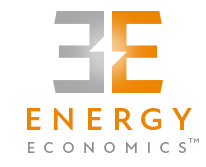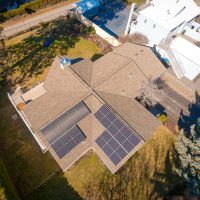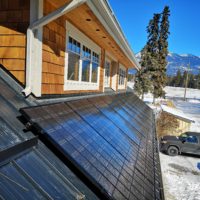Canada’s new investment tax credit for renewable energy and storage
In a bid to increase the use of renewable energy, Canada has announced a new tax credit, the CLEAN TECHNOLOGY INVESTMENT TAX CREDIT. The proposed credit is equal to 30% of the capital costs of investments in clean technologies including solar photovoltaic and battery storage systems. The new credit is part of the government’s commitment to reduce greenhouse gas emissions and move to a low-carbon economy. The credit is intended to encourage businesses to invest in clean technologies that will help them save money on their energy costs, while also reducing emissions. It follows the announcement of the Inflation Reduction Act in the United States and will help make investing in solar and energy storage in British Columbia even more beneficial.
Announced during the Fall Economic Statement 2022 by The Honourable Chrystia Freeland, Deputy Prime Minister and Minister of Finance, the tax credit is a major investment credit that will help make Canada a leader in a transition to a net-zero economy.
There are numerous benefits to doing so, which includes; reducing our reliance on importing fossil fuels, creating jobs in the green energy sector, and improving our environmental record. One key way to make Canada a leader in the transition to a net-zero economy is through electrification. This involves transitioning from traditional forms of energy like natural gas and oil to more innovative sources like solar and wind power. Electrification can help to reduce rising utility rates, as well as increase our resilience to power outages and other disruptions.
The switch to electric vehicles and other forms of electrification will not be successful without a robust battery storage infrastructure in place. Battery storage can help to smooth out fluctuations in renewable energy production and provide backup power during blackouts. It helps ensure that electricity is available when it is needed, preventing blackouts and ensuring a consistent level of power. Additionally, battery storage can help to reduce carbon emissions by providing a way to store excess energy generated from renewable sources.
By investing in electrification and battery storage, Canada can position itself as a leader in the transition to a net-zero economy. On the Renewable Energy Association website (www.renwableassociation.ca) Evan Wilson, Senior Director of Policy and Government Affairs at CanREA said,
“The choice to pursue investment tax credits for storage and green hydrogen makes CanREA confident that Canada can remain competitive as it continues to decarbonize the energy sector.”
From the official announcement (Chapter 2 – Jobs, Growth, and an Economy That Works for Everyone | FES 2022 (budget.gc.ca)):
The 2022 Fall Economic Statement proposes a refundable tax credit equal to 30 per cent of the capital cost of investments in:
- Electricity Generation Systems, including solar photovoltaic, small modular nuclear reactors, concentrated solar, wind, and water (small hydro, run-of-river, wave, and tidal);
- Stationary Electricity Storage Systems that do not use fossil fuels in their operation, including but not limited to: batteries, flywheels, supercapacitors, magnetic energy storage, compressed air storage, pumped hydro storage, gravity energy storage, and thermal energy storage;
- Low-Carbon Heat Equipment, including active solar heating, air-source heat pumps, and ground-source heat pumps; and,
- Industrial zero-emission vehicles and related charging or refueling equipment, such as hydrogen or electric heavy duty equipment used in mining or construction.
As one of the most exciting and fastest-growing segments of the solar industry, microgrids have come to be realized by the evolution of larger battery bank systems in a smaller footprint, and the scalability of both lead-acid and lithium solutions.
A microgrid is a self-contained electrical network that allows you to generate your own electricity on-site and use it when you need it most. A microgrid is thus a type of distributed energy resource. You can operate microgrids while connected to the utility grid or in disconnected “island” mode.
When the grid goes down or electricity prices peak, microgrids respond.
At Energy Economics, we believe energy is one of the most essential currencies in the world today. As an award winning solar energy installer, we take care of all aspects of design and implementation. Solar arrays can be ground mounted or roof mounted and can include solar panels, battery storage (lead acid, AGM or lithium), backup generators, solar carports, electrical contracting, energy monitoring and technology systems for residential and commercial clients.
Specific details on the tax credit will be announced in the 2023 Federal Budget. The credit is expected to be available until 2035.
For more details and to start planning for a solar plus battery microgrid to empower your business, contact us at:


